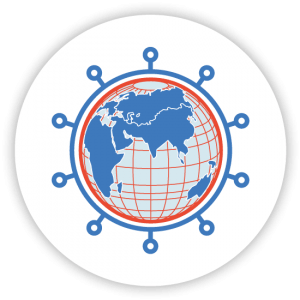Genotyping using dried blood spots in rural South African setting
1 August 2014. Related: Conference reports, Drug resistance, INTEREST workshop - 8th - 2014.
Genotyping for HIV drug resistance using dried blood spots (DBS) as a sampling method was successfully implemented in clinical practice in a rural facility in Limpopo, South Africa. [1]
Investigators from University Medical Center Utrecht (UMCU), the Netherlands and Ndlovu Care Group, Elandsdoorn, conducted the study. Lucas Hermans presented findings at the 8th INTEREST.
People with virological failure – monitored by yearly viral load test and defined as >3.0 log10 copies/mL after initial suppression <400 copies/mL – were included between 2009 and 2013. The DBS samples were prepared by spotting EDTA whole blood onto filter cards and posted (by standard mail) to the UMCU Netherlands laboratory for genotyping.
The investigators used a magnetic extraction kit to isolate viral nucleic acids, which were amplified and genotyped using a test targeting the protease (PR) and reverse transcriptase (RT) region of HIV-1. Any samples that failed to amplify for PR-RT were analysed using an RT-only test. The resistance analysis was done with HIV-GRADE and the 2011 International AIDS Society guidelines were used to assess the mutations.
In this study, 191 participants with virological failure had DBS resistance testing: 62% were women, median age 35 years, at genotyping their median viral load was 4.2 log10 copies/mL and CD4 count 191 cells/mm3, and they had received ART for a median of 844 days. The majority (83.6%) of the participants were receiving first-line therapy at failure. Genotyping was successful in 181/191 (94%) of cases, of which 79% had resistance.
The prevalence of nucleoside reverse transcriptase inhibitor (NRTI) mutations was 69%, the most common were M184V in 63% and K65R in 28%. For non-nucleoside reverse transcriptase inhibitor (NNRTI) the prevalence was 77%, and these were most frequently K103N in 40%, Y181C in 25% and V106M in 23% of participants. Protease inhibitor (PI) resistance was seen in 1%.
Dr Lucas noted that resistance testing with DBS in this rural setting was successful, the turnaround time was a median of 16 (IQR 8-33) days and that there was a high success rate in the lower viral load range.
Comment
In a related presentation on affordable HIV drug resistance tests, Sue Aitkin from the same group, noted that using RT-only testing offers some advantages over PR-RT as amplification takes three rather than five hours, it has two compared to six sequencing reactions and quick rather than extensive sequence analysis (as short fragment). The majority of people in this setting will have only received first-line treatment. RT-only would result in greater than 75% cost saving compared to a commercial assay and 40% compared to in-house PR-RT.
The low rate of PI resistance in this sample suggests that routine genotyping should be limited to the RT region, thereby reducing costs and processing time.
For the future, it would be ideal if second-line treatment had no overlapping resistance with first-line.
References:
- Hermans L et al. Clinical implementation of HIV- 1 resistance testing on dried blood spots in a rural South African setting. 8th International Workshop on HIV Treatment, Pathogenesis and Prevention Research in Resource-Poor Settings (INTEREST). 5-6 May 2014. Lusaka, Zambia. Oral abstract O_5.
http://regist2.virology-education.com/2014/8INTEREST/41_Hermans.pdf (PDF) - Aitkin S. Affordable HIV drug resistance tests: options for Africa. 8th International Workshop on HIV Treatment, Pathogenesis and Prevention Research in Resource-Poor Settings (INTEREST). 5-6 May 2014. Lusaka, Zambia.
http://regist2.virology-education.com/2014/8INTEREST/3_Aitken.pdf (PDF)


